It's arguably one of the most influential design styles in modern history - Arts and Crafts architecture, as well as furniture, left a lasting legacy.
Spanning several continents during the 19th and 20th centuries, Arts and Crafts would set further movements in motion including the Aesthetic and Art Nouveau.
Preceding the contrasting and more famous Art Deco period, what was it that characterised Arts and Crafts movement furniture or architecture?
A history of the Arts and Crafts movement
It emerged as a backlash against machinery and factory production-led art
Looking back at the years 1880-1920, it emerged as a backlash against machinery and factory production-led art, with the movement beginning later in the same century as the Industrial Revolution.
Additionally, many of the movement's influencers had socialist ideas. British writer John Ruskin's writings attacking the division of labour and industrial capitalism would heavily influence the Arts and Crafts philosophy.
While it was the formation of the Arts and Crafts Exhibition Society in 1887 that created the term, several practitioners had embraced the key principles during previous decades.
To this day, this society continues as the Society of Designer Craftsmen following its merger with the Cambridgeshire Guild of Craftsmen in 1960, long after the movement ended.
Illustrator and designer Walter Crane founded the society and the next president was William Morris. Famous for his flora and fauna-based patterns, he would help revive traditional British textile arts - notably he personally took part creating his furniture, not just designing it.
The movement quickly spread to wider Europe, North America and ultimately Japan, where the Mingei folk art style took influence from the writings of those such as Morris and Ruskin.
Arts and Crafts movement furniture examples
Mediaeval, Gothic, Romantic and folk decorative styles were common
Beyond promoting traditional craftsmanship over machine methods - in fact, Morris would leave some designs deliberately unfinished to emphasise this - the Arts and Crafts style had several characteristic motifs.
Mediaeval, Gothic, Romantic and folk decorative styles were common. This stunning walnut and leather screen from our stock depicts cherubs amongst fruit, foliage and birds:
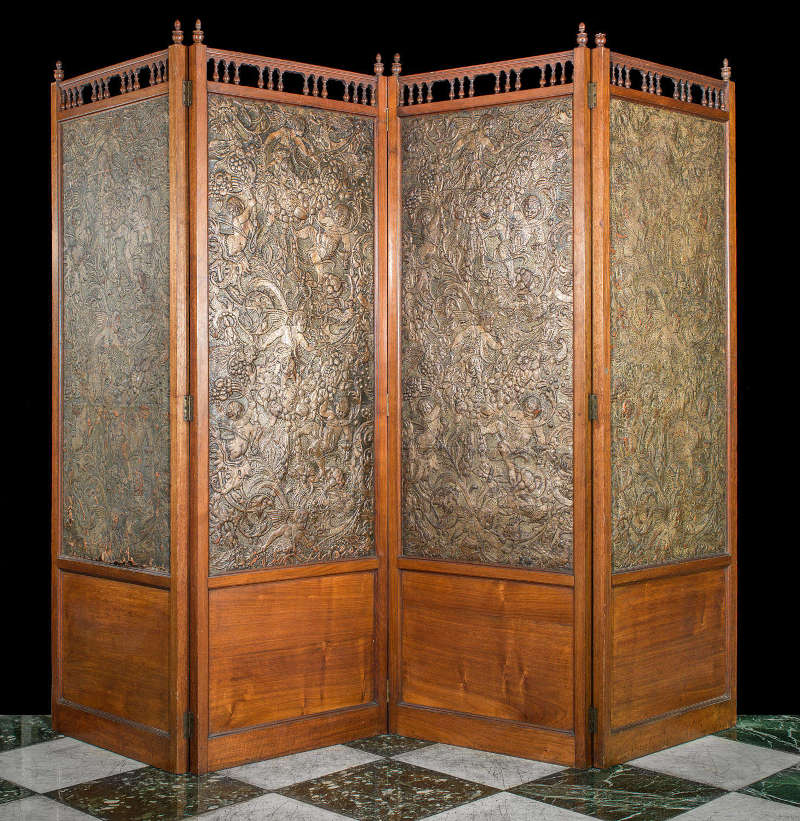
× 
Works would often have a simple appearance, by design, using natural and pre-industrial materials. Designers liked to use wood and oak in particular - this plaque from our collection shows a galleon in full sail and is set in a striking oak frame:
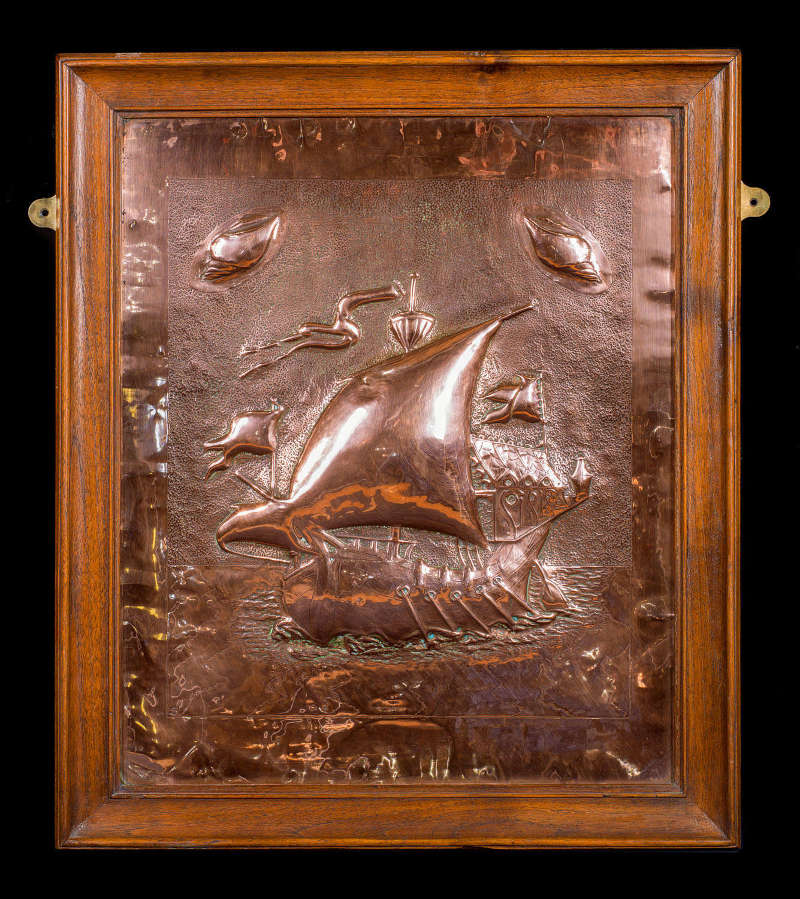
× 
The Arts and Crafts architecture style embraced locally sourced materials, simple shapes and asymmetrical designs. Notable architectural examples include:
There are many more impressive Arts and Crafts buildings still standing throughout the UK, Europe, North America and Asia.
Aftermath of the Arts and Crafts movement
Arts and Crafts had an underlying emphasis on usefulness and education.
Another movement from this period, the Aesthetic movement - coined as a term in 1882 - had several similarities with the Arts and Crafts style.
Both were a reaction to the effects of industrialisation on art and design. But there were key differences.
Arts and Crafts had an underlying emphasis on usefulness and education - practitioners even criticised the government for deprioritising practical teaching of the crafts. In contrast, the beautiful works associated with Aestheticism were ‘art for art's sake' above all else.
This elegant Aesthetic movement marble fireplace embodies the principles, with finely cut and gilded motifs and stylised anthemion detail:
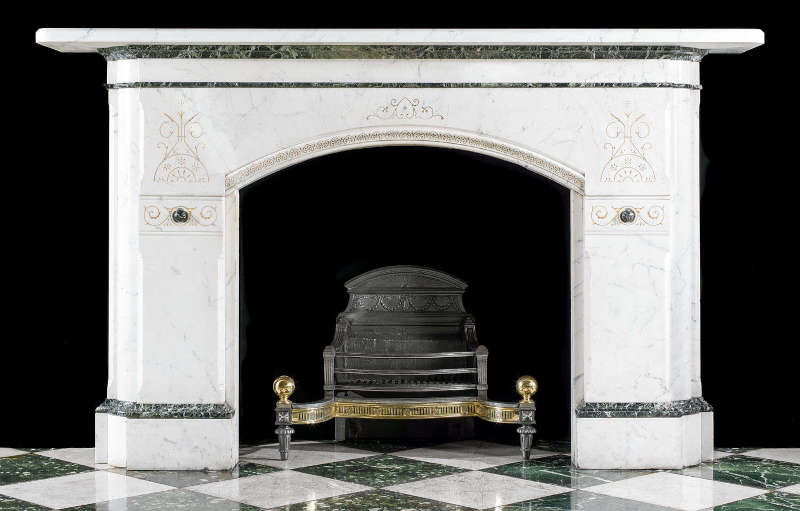
× 
And the Arts and Crafts movement also inspired Art Nouveau with its focus on natural forms, such as the curves of flowers - as shown on this Edwardian fire surround:
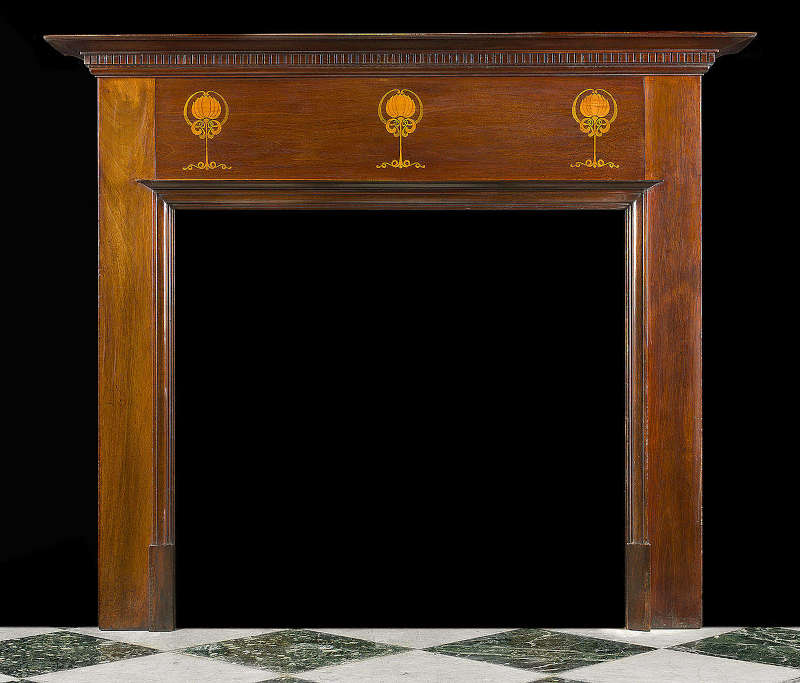
× 
Following the Art Nouveau style, the Art Deco movement of the 1900s challenged these principles with sharper angles and more geometric shapes. It also represented luxury and glamour through the use of the finest materials - as you can see in this fireplace surround with honey-coloured Horton stone:
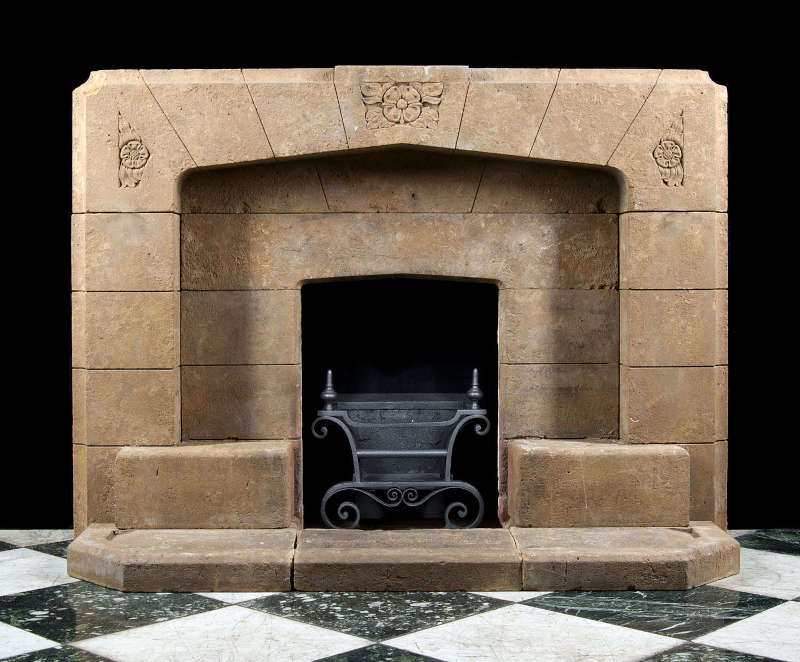
× 
Summary: the Arts and Crafts Movement
By promoting traditional workmanship over industrialisation, the Arts and Crafts movement made a statement in the late 1800s.
It had several characteristic motifs including Mediaeval, Gothic, Romantic and primitive decor including rustic folk themes.
Several other movements around this time have overlapping principles - including Aesthetic and Art Nouveau. But soon afterwards, Art Deco would challenge Art Nouveau in particular.
Take a look at our Art Nouveau, Arts and Crafts, Art Deco fireplace collection to see more pieces from this time period and for any queries, please don't hesitate to contact us.